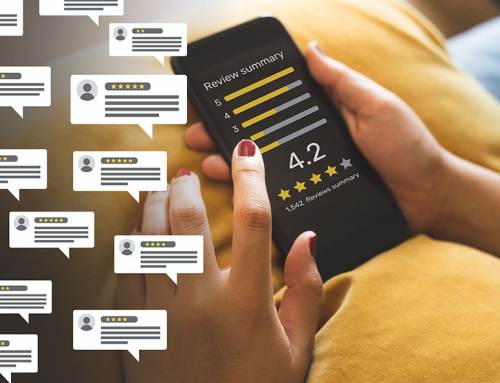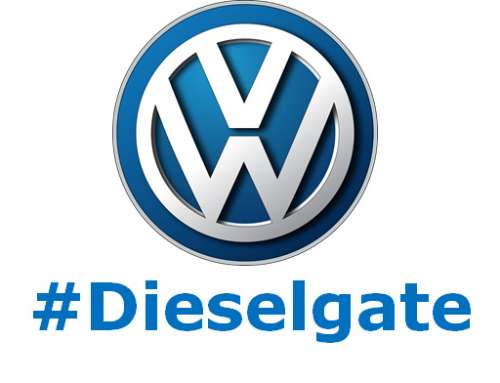 Edible’s Lee Oakley was asked by Intellectual Property Magazine to comment on Product liability in the health sector in the wake of the PIP Implant scandal which Edible had previously written about with the article ‘PIP implants & online reputation of cosmetic clinics‘
Edible’s Lee Oakley was asked by Intellectual Property Magazine to comment on Product liability in the health sector in the wake of the PIP Implant scandal which Edible had previously written about with the article ‘PIP implants & online reputation of cosmetic clinics‘
When a brand hits global scandal
In January, Poly Implant Prothèse (PIP) founder Jean-Claude Mas, was charged with causing “involuntary injuries” to thousands of women who received breast implants in the ensuing public health scandal. Catherine White asks what can a company do to minimise brand damage and survive after its reputation is left in ruins?
French manufacturer Poly Implant Prothèse (PIP) first made the headlines a decade ago when a surgeon wrote to the UK regulatory body Medicines and Healthcare Products Regulatory Agency (MHRA) regarding a female patient’s ruptured PIP implants. What followed was a global health scare and the eventual demise of the company.
Fast forward to 2009, and the number of adverse incident reports to the MHRA had risen to 269. Despite fears of the implants rupturing, the product was not removed from the market until March 2010, when French authorities found that the silicone implants were made from industrial mattress filling. In December 2011, the French government recommended all women to remove their PIP implants as a precaution, and in January 2012, the UK’s NHS said it would remove and replace PIP implants if women wanted. It is estimated that in the UK alone, around 47,000 women have PIP implants and that 400,000 PIP implants had been sold worldwide . PIP silicone implants were never licensed for use in the US.
The company went bankrupt in 2010. Mas is currently under investigation and was jailed in March for failing to pay his bail amount of €100,000 ($125,000).
The IP surrounding breast implants include a patented breast comfort pillow and cushion after a patient has undergone surgery and a patent for a breast implant which detects possible rupture early on by excreting an indicator through the kidneys, which changes the colour of urine to a bright reddish-orange. This is an early warning signal to the patient of a rupture or impending rupture.
Regarding PIP, Mas had applied for a patent to sell implants containing silicone covered in polyurethane foam when launching his company in 1991. However, in 1995, France banned silicone breast implants following the US Dow Corning scandal . This ban was lifted in 2001, and Mas instead used the approved silicon raw components from Californian silicone materials manufacturing company NuSil, for the PIP breast implants. However, an investigation launched by French government regulator the Agence Française de Sécurité Sanitaire des Produits de Santé (AFSSAPS) in March 2010, revealed that PIP was using NuSil silicone components to manufacture fillers for some implants, but not for others. It was revealed that PIP was using raw materials sourced from other companies (Bluestar Silicones and Momentive Performance Materials ) that were not intended for medical use, to make its own formulation of silicone filler material.
In May 2012, a UK Department of Health report reviewing MHRA’s actions following the implants alert said, “Very simply, PIP applied for and received approval for their silicone breast implant and then, after receiving approval, fraudulently changed the device to use a non-approved filler material. Putting in place even the most exhaustive testing regime before market authorisation would not have prevented this deliberate fraud taking place once the product was on the market.” Bristows’ Dev Kumar said there will always be an individual who breaks the rules, “No regulatory system, however robust, can guarantee against a further incident of this nature occurring if there is deliberate intent to circumvent the law.”
The review concluded that while MHRA followed scientific and clinical advice, it should “look at how it gathers evidence so it is able to identify problems early. It needs to better analyse reports about higher risk medical devices. And it needs to improve the way it communicates with the public.”
Breast implants fall under the European legislation on medical devices which requires that, before placing such devices on the market, the manufacturers must carry out an assessment to ensure that their devices fulfil the relevant legal requirements, and specifically, that their devices will not compromise patient safety. For high risk devices, such as breast implants, a third-party conformity assessment body, a so-called notified body, is involved in the conformity assessment procedure. In this case, the notified body was TUV Rheinland, a German company that issued the certificate that approved the use of the Conformité Européenne mark for PIP silicone breast implants in October 1997. The regulator was purposefully misled by PIP as the company used its own formula fraudulently substituting the approved material.
So using PIP as a case study, what can companies do to avoid brand damage? And is it possible for a company to recover and revive its brand after its reputation is undermined by a global scandal?
What is brand damage?
Simply put, brand damage is when the reputation or goodwill of a brand suffers harm. This harm to a brand can be for a number of reasons, be it trademark infringement via the action of counterfeiters leaving consumers associating fakes with a genuine product or a brand damaged due to a celebrity endorsement deal. Alternatively, a brand can cause harm to itself due to ill-prepared actions, such as postings on social media sites, which causes consumer backlash or producing faulty goods and being dishonest (like PIP). Griffin Law’s Donal Blaney said, “Brand damage is when the reputation of a particular business or individual suffers as a consequence of its/his own actions or, more commonly, the actions of others (whether malicious or otherwise).”
Managing director Lee Oakley of digital consultancy firm Edible said to avoid such damage, it is vital that a business puts its customers first. “There are many elements to successful brand management, but the overriding principle should be to listen to the needs, wants and desires of your customers and give them a brand they can love, respect and trust in, above all others in the marketplace. To paraphrase The Kinks, ‘Give the people what they want’, or at least what they think they want.”
Social media
After the PIP crisis hit, social media networks such as Facebook and Twitter were abuzz with PIP customers criticising the company and sharing their experiences of how the implants were affecting their health. Of course, social media can be a great vehicle to advertise a brand and reach new audiences to communicate with, but ultimately, it is the message being communicated that, as Oakley says “can unite or divide an audience and build or ruin a company”.
Best practice to determine successful online brand management therefore includes positively engaging with customers, using various marketing channels, awareness of brand image and voicing a brand’s unique selling point. However, all these positives become tainted by reputational risk if a company is hiding a skeleton in its closet. Oakley said, “Crisis management is more effective when the solutions are not all being devised in real time, but planned for beforehand. When the day comes that the skeleton surfaces, (and it will come), crisis management is all about damage limitation and while every crisis has its own damage rating, the quicker the crisis can be resolved is often at odds with how much liability the brand owner wants to publicly admit, and achieving the best outcome in these circumstances is a fine art.
“If you do have a proverbial skeleton in the closet then learn from it, and use the experience to avoid further skeletons from occurring. If you were to ask me what the one piece of best practice advice would be in the event of a scandal getting out, it would be hold your hands up and work on being forgiven, as after forgiven comes forgotten.”
Blaney highlighted that a company can avoid damage by using technological and human resources to constantly monitor and act if anything goes awry, but added “this invariably means having a firm of lawyers on retainer to monitor what is being said and to then advise on whether what is said is defamatory/harassment/or otherwise actionable. These lawyers will then decide whether to obtain interim injunctive relief to protect the brand from damage or further damage.”
Using technological and human resources, however, is limited or nonexistent for small and medium enterprises (SMEs) due to lack of financial supplies and man power. So what can SMEs do to protect their brand from harm? Oakley said one thing to look out for is employee actions. “It is crucial that brand owners keep in mind that the actions of the business and of the employees today, could well be made public in the future, via a disgruntled ex-employee or dissatisfied customer. As such, brand owners should conduct themselves in a manner that reflects the scrutiny and scope of modern consumer generated content that may ultimately influence their brand.”
However, it does seem that big corporations can cope better when beset by scandals and bounce back quite well . So is it true that companies with deep pockets have it easier? The answer, according to Oakley is a partial no. “The deeper the pocket, the bigger the resources are to overcome a scandal and its resultant impact upon the brand. However, there are many other considerations, one critical issue being the scale and scope of the scandal in the first place, the other being the need for the brand’s survival in the marketplace. The old adage rings true (when likened to media attention) in that, the bigger they are the harder they fall. Whereas, a small company will certainly have less exposure in comparison, and its brand will need far fewer resources and shallower pockets to overcome a crisis.”
Blaney notes that companies, whether big or small, must be tactical when dealing with social media, “Brand managers should always look to engage openly with stakeholders, including customers/clients. Dealing with complaints head-on in forums should be encouraged. Equally, those who cower behind anonymity online to denigrate and damage businesses/individuals should be unmasked and stopped from doing so. Just bear in mind the risks that in doing so, the “Streisand Effect ” may be unleashed. So before you over-react, think twice.”
So how does a company know when trouble is lurking and its brand is coming under attack? Blaney notes, “In a business context, it will be when sales and profits fall as a result of customers shunning the business because the reputation of its products or services have been damaged, whether through ridicule, targeted campaigns, media comment or otherwise.
“YouGov’s BrandIndex is a product that is key to brand owners. It allows companies to monitor the perception of their brands and track a real-time picture of their brands’ health and their competitors. Ultimately the bottom line is the key performance indicator, although of course there may be many reasons sales/profits might decline (particularly in the current climate).”
A scandalised brand
While it is easy to single out PIP for its misdemeanours, anger was also directed at the MHRA for not regulating PIP properly after the crisis hit the headlines. Of course, any regulatory service can only act on the available information they have, but as seen in the PIP case, the regulatory body’s weakness was assuming that all the information it received was honest and truthful. Could it be then that MHRA itself, suffered reputational damage? Oakley thinks so, “In the case of PIP, independent and more rigorous regulatory verification, validation and scrutiny may have helped, but unless the assumption that companies and corporations are always telling the truth is challenged, we leave ourselves open to future abuses and scandals.”
UK health minister Lord Howe acknowledged failings in the MHRA saying, “It must be emphasised that this case was one of deliberate fraud by the PIP manufacturer which purposefully misled European regulators. But serious lessons must be learned from this scandal. The MHRA needs to look at how it gathers evidence so it is able to identify problems early. It needs to better analyse reports about higher risk medical devices.”
However, Oakley added that the damage has already been done and the health sector will feel the impact of the scandal for many years to come. “When a consumer product is flawed because of poor design or less than honourable businesses and/or business practices, the consumer generally accepts that their loss is limited to the financial aspect and inconvenience. With the PIP case, loss of life and serious ill health became a real possibility and it is the prevention of future cases like PIP that will likely be the lasting legacy of the scandal.”
Summary
In June, the Department of Health released its final expert report on PIP and stated that after exhaustive worldwide testing of the PIP gel material, the implants were not toxic. While this was no doubt greeted with relief by patients, can a company ever survive and repair its brand damage after it has been subsumed by controversy on the scale of PIP’s? Blaney thinks not, “Often in most cases, a company cannot repair its bad brand and it is best to close down and start again or re-brand. If it is considered by advisers that a brand can be saved and re-launched then an apology, penance, a redoubling of effort and a laser-like focus on ensuring no further damage occurs is critical.”
Similarly, the MHRA is working hard to recover from the crisis. Lord Howe said, “We have identified the lessons and we will take all steps to act on them. Further, if something like this happen again, our systems for dealing with it will be stronger.”
Oakley highlights that while it is difficult for companies such as PIP to recover from such a crisis, other UK cosmetic surgery groups can recover … just. “Using the Harley Medical Group as an example, which has 13,900 patients with PIP implants, when it said the scandal was the UK government’s responsibility, it was a clear example of what not to do in crisis management. It effectively passed the buck and employed the defensive stance of ‘deny all liability’. But when you are championing brand messages such as, “We are committed to the highest standard of care in Cosmetic Surgery”, you cannot claim in one breath that you offer the highest standard when in the other you are effectively denying all liability.
“Harley Medical Group may have thought that they could not afford to go the full distance, right the wrong and hold their hands up and be forgiven, as it may not be financially sound for them to do so, but herein lays the paradox. In adopting such a stance of denial, you risk loss of future business and business failure through a cessation of sales, which is just as financially unsound.”
About Edible
Edible is a Liverpool SEO & digital marketing agency offering services such as Online Reputation Management (ORM), Search Engine Optimisation (SEO) and Digital Content Creation in sectors ranging from Financial, Professional Sports, Home Interiors, Retail, Travel and more…






Leave A Comment
You must be logged in to post a comment.